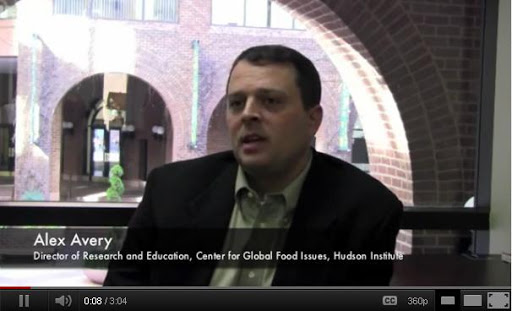Center for Global Food Issues
TYRONE HAYES—A FROG IN HIS THROAT, BY: ALEX AVERY
Posted on September 16, 2010 by CGFI (originally posted here: http://www.cgfi.org/2010/09/tyrone-hayes-a-frog-in-his-throat-by-alex-avery/)
Dr. Tyrone Hayes of UC Berkeley—in his personal quest to demonize the herbicide atrazine just as a previous generation successfully demonized Alar—gave an encore performance before the EPA’s fourth Scientific Advisory Panel on this subject on Wednesday.
I say encore, because Hayes mostly recycled old claims that the EPA has previously investigated and discarded. Hayes attacked me before the panel for claiming that he refuses to release his data. Of course, all I did was quote a senior EPA official who publicly distanced the agency from Hayes in a letter earlier this year to an Illinois state senator. In that letter, the EPA explicitly tries to put the Hayes-generated controversy to rest, clearly stating that Hayes has indeed refused to make his data public. Hayes ignored this letter completely.
He must know that the EPA won’t be fooled. But that wasn’t his purpose. He was playing to the cameras. You see, he brought a documentary film crew with him.
The sad part is that a lot of this will actually look good when edited down into the now-familiar hero-scientist narrative. Viewers will not know that most of what Hayes presented to the SAP is old data that has been thoroughly refuted by the EPA already.
One example: Hayes went on at length about a study of elevated incidences of prostate cancer in workers at an atrazine plant in St. Gabriel, Louisiana. EPA looked closely at this years ago and determined that the “x” factor at work wasn’t atrazine, but the manufacturer’s aggressive health screening for employees.
Another example: Hayes purported to show that atrazine renders frogs infertile, transforms many males into females and other males into “homosexual frogs.” Viewers of the Hayes documentary hagiography will never know that EPA also looked into this too —and dismissed it.
Hayes’ biggest problem, however, is that all these massive assaults on frog fertility simply don’t show up in the field – quite literally, in farmer’s fields, where atrazine use is the highest. In fact, frogs seem to do just fine there.
This is an important point about the quality of Dr. Hayes’s “science.” It deserves to be explicated at length.
Hayes has claimed to find subtle hormonal impacts of atrazine at specific, low concentrations in his California laboratory. These claims arose after studies using the African clawed frog, Xenopus laevis, a non-native species to North America and considered the “lab rat” of the amphibian world.
However, seeing as there are no African frogs native to North America, Hayes did subsequent laboratory research using laboratory-reared specimens of the Northern leopard frog, Rana pipiens, obtained from a laboratory supplier in Boston, Massachusetts.
Hayes reported finding subtle hormonal impacts in these lab experiments in this species, too.
Subsequently, Hayes set out on a major field expedition to corroborate the impacts seen in the lab with real-world observations. Yet instead of finding proof of the laboratory findings, Hayes found conflicting and contradictory observations. He found higher numbers of “malformed frogs” in places with no history of atrazine use and/or barely detectable atrazine traces. There was no dose response and no dearth of frogs. In fact, it takes a careful reading of his papers to find that Northern leopard frogs were abundant at all surveyed locations.
This was especially in areas where corn was grown under irrigated conditions, indicating habitat was a critical factor, not atrazine use.
We now know from Yale researchers that Northern leopard frogs have higher numbers of gonadal abnormalities in urban areas than in rural, agricultural areas.
As Hayes’s own field research with native leopard frogs failed to further his grand narrative (and, in fact, showed their relative abundance despite 50 years of atrazine use) and other researchers findings undercutting his past claims that atrazine posed a serious risk to amphibian populations, Hayes has returned to his artificial crisis world of the laboratory using an African species of frog that has thrived in Africa despite widespread and decades-long atrazine use in farming.
Crises are so much easier to propagandize and hype when they are unencumbered by inconvenient truths like abundant frogs and conflicting data.
This entry was posted in Latest News and tagged ALEX a, Alex Avery, atrazine, CGFI, cgfi.org, Dr. Tyrone Hayes, EPA, farming. Bookmark the permalink.
Category: Resources and Links, Tyrone Hayes


